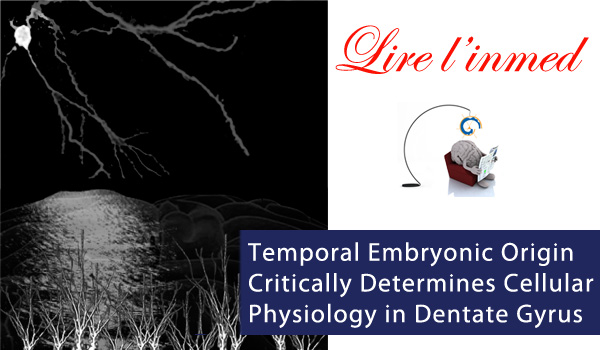Clair de lune on hippocampus. The morphological diversity and beauty of neurons often summon poetry in our mind. Here the authors show the beautifully-named semilunar cells are among first glutamatergic neurons to populate the dentate gyrus. This allows them to control other neurons, even beyond development. Their birth date confers them physiological properties typical of early born glutamatergic neurons which prepare them to an exceptional fate but the origin of their distinct shape remains elusive still… (by Ingrid Bureau)
The authors: Laurène Save, Agnès Baude and Rosa Cossart
Scientific abstract: The dentate gyrus, the entry gate to the hippocampus, comprises 3 types of glutamatergic cells, the granule, the mossy and the semilunar granule cells. Whereas accumulating evidence indicates that specification of subclasses of neocortical neurons starts at the time of their final mitotic divisions, when cellular diversity is specified in the Dentate Gyrus remains largely unknown. Here we show that semilunar cells, like mossy cells, originate from the earliest stages of developmental neurogenesis and that early born neurons form age-matched circuits with each other. Besides morphology, adult semilunar cells display characteristic electrophysiological features that differ from most neurons but are shared among early born granule cells. Therefore, an early birthdate specifies adult granule cell physiology and connectivity whereas additional factors may combine to produce morphological identity.
Published in Cerebral Cortex, June 2018
More work from the group is here

